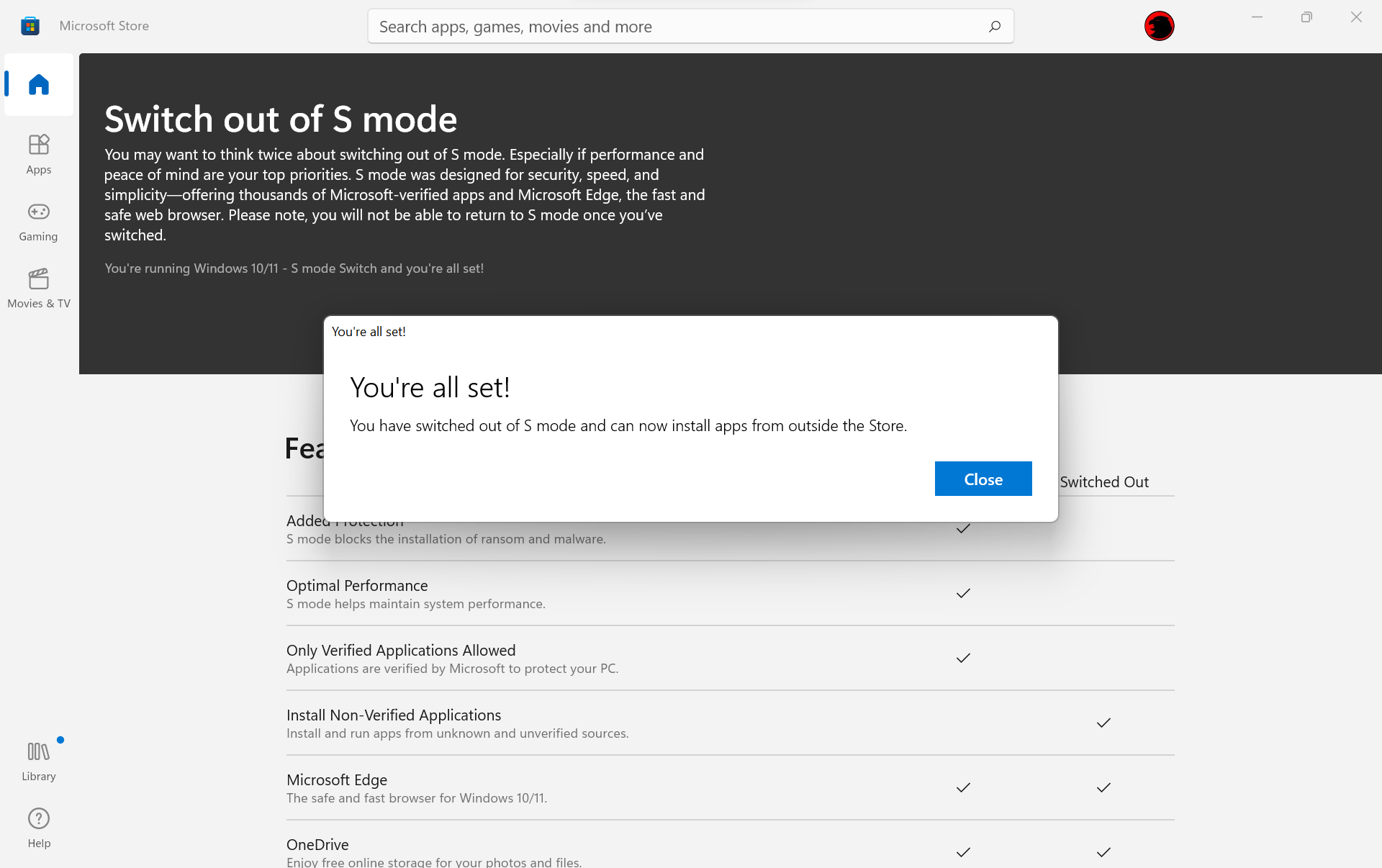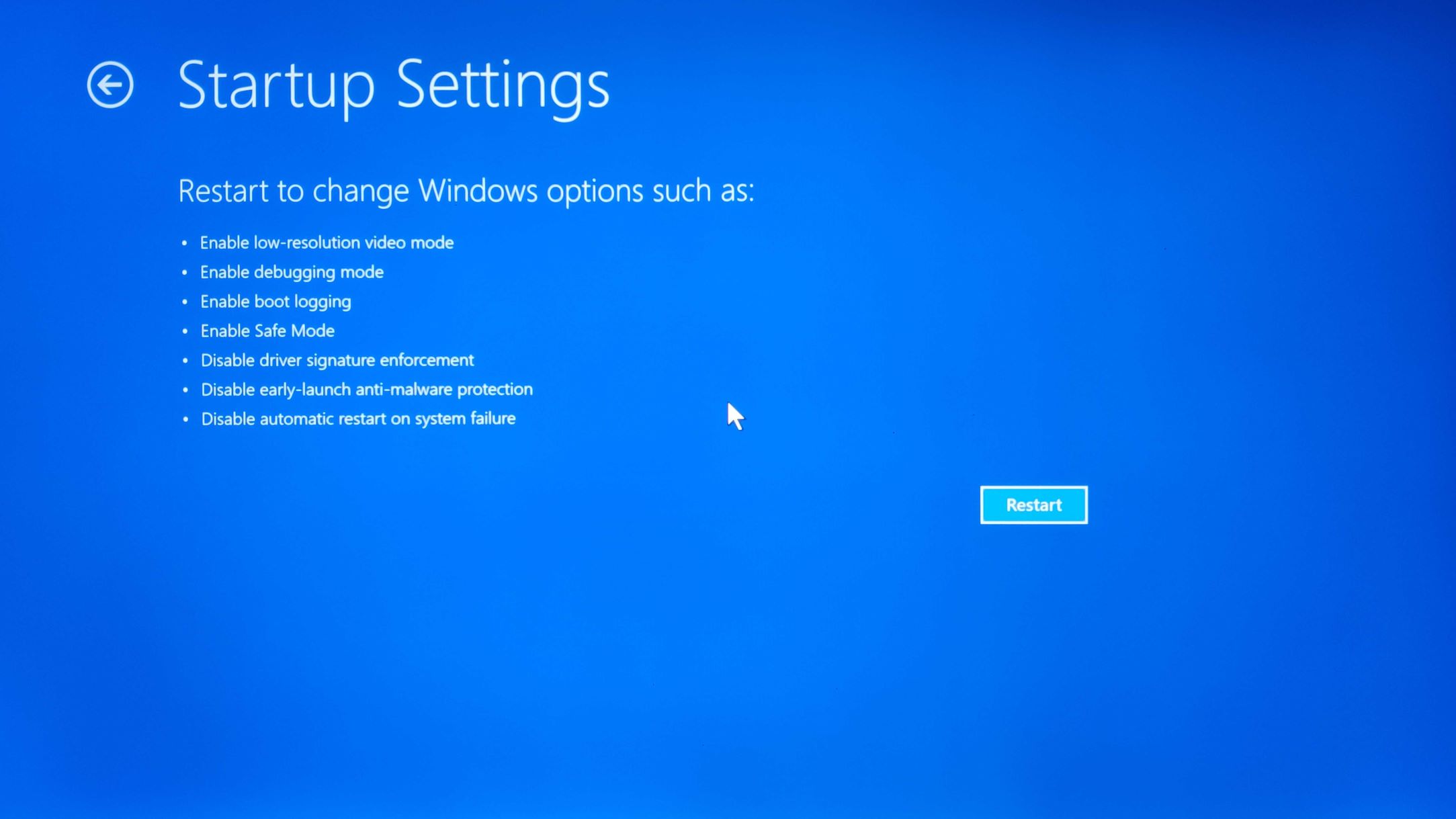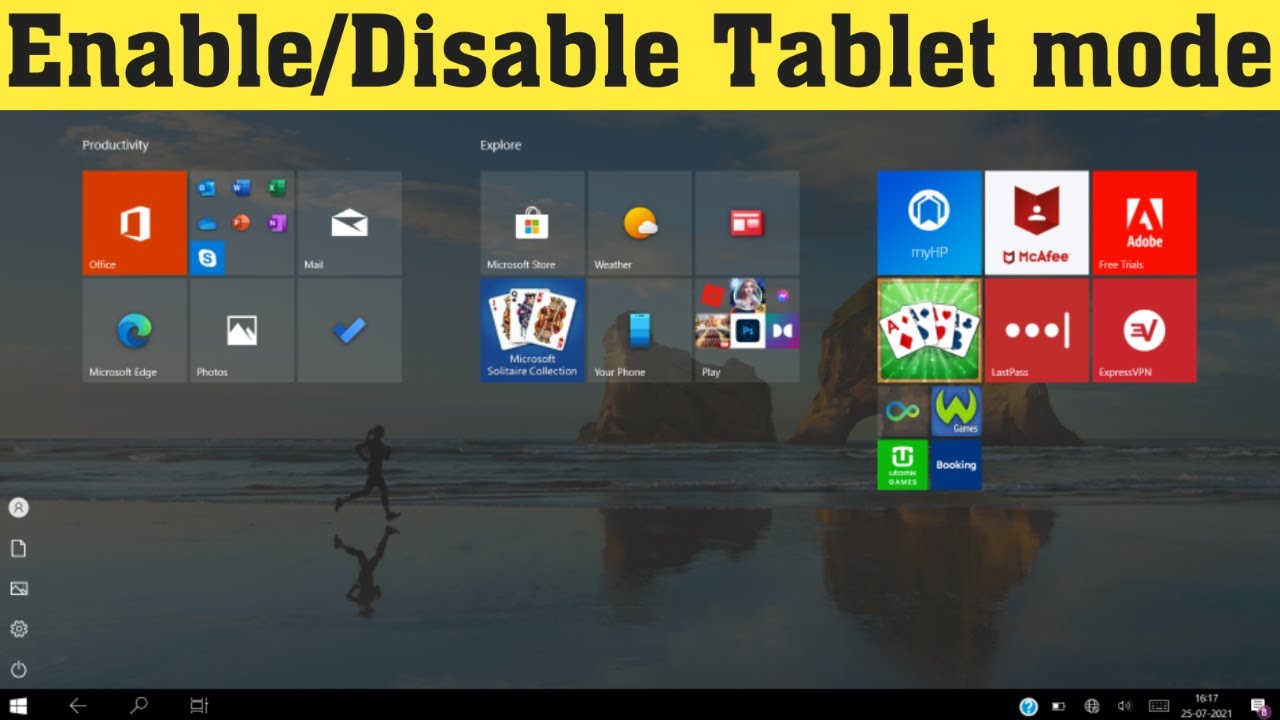What Is S Mode in Windows 11
S Mode, short for “Security Mode,” is a unique feature introduced in Windows 11 that aims to provide a simplified and secure computing experience. It is primarily designed for users who prioritize a streamlined and efficient operating system.
When your device is running in S Mode, it can only install and run applications from the Microsoft Store. This restriction ensures that all the apps you use are vetted and verified by Microsoft, reducing the risk of malicious software infiltrating your device. S Mode also enforces tighter security measures, making it more challenging for viruses and malware to gain access.
One key benefit of S Mode is its ability to enhance the performance and battery life of your device. By limiting the installation of third-party applications, S Mode minimizes the background processes and system resources consumed, resulting in smoother and faster functioning. Additionally, since Microsoft Store apps are optimized for efficiency, they are less likely to drain your battery or slow down your device.
S Mode is especially useful for individuals who primarily use their devices for browsing the web, working with productivity apps, and consuming media. With the curated collection of apps in the Microsoft Store, users can discover and install a wide range of applications that cater to their needs, including popular options like Microsoft Office, Netflix, and Spotify.
Furthermore, S Mode offers excellent peace of mind for parents and guardians. With S Mode enabled on their children’s devices, they can have more control over the apps their kids can access, ensuring a safer online experience. Microsoft Store apps undergo rigorous scrutiny to maintain age appropriateness, making it easier to monitor and regulate app usage.
It’s important to note that S Mode does have some limitations. For instance, not all applications are available in the Microsoft Store. If you have specific software requirements or rely heavily on apps that are not compatible with S Mode, you may need to switch out of it to access a more extensive range of applications.
In the next section, we will explore the advantages and disadvantages of using S Mode in Windows 11, helping you make an informed decision about whether it is suitable for your needs.
Pros and Cons of S Mode
S Mode in Windows 11 comes with its own set of advantages and disadvantages. Let’s take a look at the pros and cons to help you determine if S Mode is the right choice for you:
Pros:
- Simplicity and Ease of Use: S Mode offers a simplified and user-friendly experience, making it ideal for casual users or those who are less tech-savvy. The curated selection of apps in the Microsoft Store ensures a hassle-free installation process.
- Enhanced Security: With S Mode, you can rest assured that your device is protected from most malware, as it only allows apps from the Microsoft Store. This reduces the risk of inadvertently downloading and installing malicious software.
- Better Performance: By limiting the installation of third-party applications, S Mode helps optimize system resources, resulting in improved performance and faster boot times. This can be particularly beneficial for low-powered devices.
- Battery Efficiency: Microsoft Store apps are designed to be resource-efficient, which means they consume less power and extend your device’s battery life compared to traditional desktop apps.
- Parental Controls: S Mode provides an added layer of security for parents who want to ensure a safe computing environment for their children. By restricting app installations to only those available in the Microsoft Store, parents can have more control over their child’s device usage.
Cons:
- Limited App Availability: One of the major drawbacks of S Mode is the restricted access to apps. Not all applications are available in the Microsoft Store, including some popular software or specialized tools that might be essential for your work or hobbies.
- Reduced Customizability: S Mode restricts certain settings and configurations, limiting the customization options available to users. This could be a limitation for power users or those who prefer a more personalized computing experience.
- Compatibility Issues: If you rely heavily on legacy software or specialized applications that are not compatible with S Mode, you will need to switch out of it to access those applications.
- Dependency on Microsoft Store: S Mode ties you to the Microsoft Store for app installations. If there are issues with app availability or if you prefer to have more freedom in choosing software from other sources, S Mode may not be suitable for you.
In the next section, we will discuss how to enable or disable S Mode in Windows 11, as well as how to switch out of it if needed.
How to Enable or Disable S Mode in Windows 11
Enabling or disabling S Mode in Windows 11 is a straightforward process. Here’s how you can do it:
To Enable S Mode:
- Open the Windows Settings by clicking on the Start menu and selecting the gear icon, or by pressing the Win + I keyboard shortcut.
- In the Settings window, click on “System” and then select “About” from the left sidebar.
- Scroll down to the “Device specifications” section and click on “Switch to Windows 11 S” (or a similar option) under the “Windows specifications” heading.
- Follow the prompts to confirm your decision and wait for the system to restart.
- Once your device restarts, it will be running in S Mode and only allow installations from the Microsoft Store.
To Disable S Mode:
- Open the Windows Settings.
- Click on “System” and then select “About” from the left sidebar.
- Under the “Windows specifications” heading, you should see an option to “Switch out of S Mode.”
- Click on “Switch out of S Mode” and then select “Go to Store.”
- It will redirect you to the Microsoft Store page, where you can choose to install the “Switch out of S Mode” app.
- Follow the on-screen instructions to complete the process.
- Once the app is installed and launched, click on the “Get” button to start the process of switching out of S Mode.
- After the process is complete, your device will restart, and you will have the freedom to install applications from sources other than the Microsoft Store.
Remember, switching out of S Mode is a one-way process, meaning you won’t be able to go back to S Mode once you’ve disabled it. Therefore, it’s essential to consider your app requirements and preferences before making the switch.
In the following section, we will explore how to switch out of S Mode in Windows 11.
How to Switch Out of S Mode in Windows 11
If you find that S Mode in Windows 11 is too limiting for your needs and you want the flexibility to install applications from sources other than the Microsoft Store, here’s how you can switch out of S Mode:
- Open the Microsoft Store by clicking on the Start menu and searching for “Microsoft Store.”
- In the Microsoft Store, search for “Switch out of S Mode” or go directly to the app page by using this link.
- Click on the “Get” or “Install” button to download and install the “Switch out of S Mode” app.
- Once the installation is complete, launch the app.
- In the app, click on the “Get” button to start the process of switching out of S Mode.
- Follow the on-screen instructions and prompts to proceed with the switch.
- During the process, you might be asked to confirm your decision and acknowledge that switching out of S Mode is a one-way process.
- Wait for the process to complete, and your device will restart.
- After the restart, you will be out of S Mode, and you’ll have the freedom to install apps from sources other than the Microsoft Store.
It’s important to note that switching out of S Mode is irreversible, meaning you cannot go back to S Mode once you’ve made the switch. Before proceeding, ensure that all the apps you need are compatible with Windows 11 outside of S Mode.
In the next sections, we will discuss the benefits and limitations of using S Mode in Windows 11, helping you determine if it is suitable for your computing needs.
Benefits of Using S Mode in Windows 11
S Mode in Windows 11 offers several benefits that make it an attractive choice for certain users. Let’s explore the advantages of using S Mode:
- Enhanced Security: One of the primary benefits of S Mode is the heightened security it provides. By allowing installations only from the Microsoft Store, S Mode significantly reduces the risk of downloading and installing malicious software. Additionally, Microsoft rigorously vets and verifies apps in the store, ensuring a safer computing experience.
- Simplified and Streamlined Experience: S Mode offers a simplified and streamlined user experience. Since it limits app installations to those available in the Microsoft Store, users don’t have to worry about the complexities of searching for and downloading applications from various sources. This simplicity makes it an ideal choice for individuals who prefer a hassle-free computing experience.
- Improved Performance: Devices running in S Mode tend to experience improved performance. By allowing only Microsoft Store apps, the system resources are optimized, resulting in faster boot times, smoother multitasking, and overall better performance, especially on low-powered devices.
- Better Battery Life: Using Microsoft Store apps in S Mode can also lead to better battery life. Designed to be more power-efficient, these apps consume fewer resources and are optimized for longer battery usage. This makes S Mode a favorable option for users who regularly rely on their devices while on the go.
- Parental Controls: S Mode provides an added layer of security and control for parents. With S Mode enabled on their children’s devices, parents can limit app installations to only those available in the Microsoft Store. This allows them to better monitor and manage their child’s access to applications, ensuring a safer and more appropriate computing environment.
S Mode is recommended for individuals who primarily use their devices for web browsing, productivity tasks, and media consumption. With the wide range of apps available in the Microsoft Store, users can discover and install applications tailored to their needs without the complexity and potential security risks often associated with third-party app sources.
In the next section, we will discuss the limitations of S Mode in Windows 11 to help you make an informed decision about whether it is the right choice for your computing needs.
Limitations of S Mode in Windows 11
S Mode in Windows 11 offers a simplified and secure computing experience, but it also comes with certain limitations. Here are the key limitations of using S Mode:
- Restricted App Availability: One of the main drawbacks of S Mode is the limited availability of apps. Since S Mode allows installations only from the Microsoft Store, some specialized software or applications may not be available. If you rely heavily on specific applications that are not in the Microsoft Store, you might need to switch out of S Mode to access and install those apps.
- Reduced Customizability: S Mode restricts certain settings and configurations, limiting the customization options available to users. This can be a drawback for power users who prefer to tweak and personalize their computing experience according to their specific needs and preferences.
- Dependency on Microsoft Store: S Mode ties you to the Microsoft Store for app installations. While the Microsoft Store offers a wide range of apps, there may be instances where certain apps or software you need are not available. This can limit your choices and flexibility when it comes to installing applications from other sources.
- Compatibility Issues: S Mode may pose compatibility issues if you rely on legacy software or specialized applications that are not compatible with the Microsoft Store. In such cases, you will need to switch out of S Mode to install and use these applications.
- Limited Web Browser Options: In S Mode, you are restricted to using the Microsoft Edge web browser, as other browser options might not be available in the Microsoft Store. If you have a preference for a different web browser, you would need to switch out of S Mode to install and use it.
It’s essential to carefully consider these limitations and assess whether they align with your specific needs and requirements. If you heavily rely on specific software, need advanced configuration options, or prefer more freedom in app choices, switching out of S Mode might be a better option for you.
In the next section, we will help you determine if S Mode is suitable for you by discussing the factors to consider when deciding whether to use S Mode in Windows 11.
Is S Mode Suitable for You?
When deciding whether S Mode is suitable for you in Windows 11, there are several factors to consider. While S Mode offers benefits such as enhanced security and a simplified experience, it also comes with limitations. Here are some points to help you make an informed decision:
- App Requirements: Consider the specific applications you need for your workflow or personal use. If the apps you rely on are available in the Microsoft Store and you can operate within its limitations, S Mode might be a suitable choice for you. However, if you require access to specialized or legacy software that is not in the Microsoft Store, switching out of S Mode would be necessary.
- Customization Needs: Determine if you have a preference for customizing and personalizing your device settings. S Mode restricts certain customization options, so if you enjoy a high level of customization and want more control over your device’s configuration, switching out of S Mode may be more suitable.
- Security Concerns: If security is a top priority for you and you prefer a controlled app installation environment, S Mode provides an added layer of security against potential malware and unauthorized applications. However, if you are confident in your ability to handle potential security risks and prefer greater app choices, switching out of S Mode might be the better option.
- Dependency on Microsoft Store: Evaluate your reliance on applications outside of the Microsoft Store. If you can accomplish your tasks and meet your needs with the apps available in the store, S Mode is a suitable choice. However, if you require specific software not available in the Microsoft Store, switching out of S Mode will be necessary to access a wider range of applications.
- Device Performance: Consider the hardware specifications of your device. S Mode is beneficial for low-powered devices as it optimizes system resources, resulting in improved performance and extended battery life. If you have a high-performance device, the benefits of S Mode may be less noticeable, and switching out of it could provide more flexibility and options.
Assessing these factors will help you determine if S Mode aligns with your specific needs and preferences. Remember, switching out of S Mode is a one-way process, so take the time to evaluate your requirements before making a decision.
In the next section, we will provide a summary of the key points discussed and offer some final thoughts on S Mode in Windows 11.

























